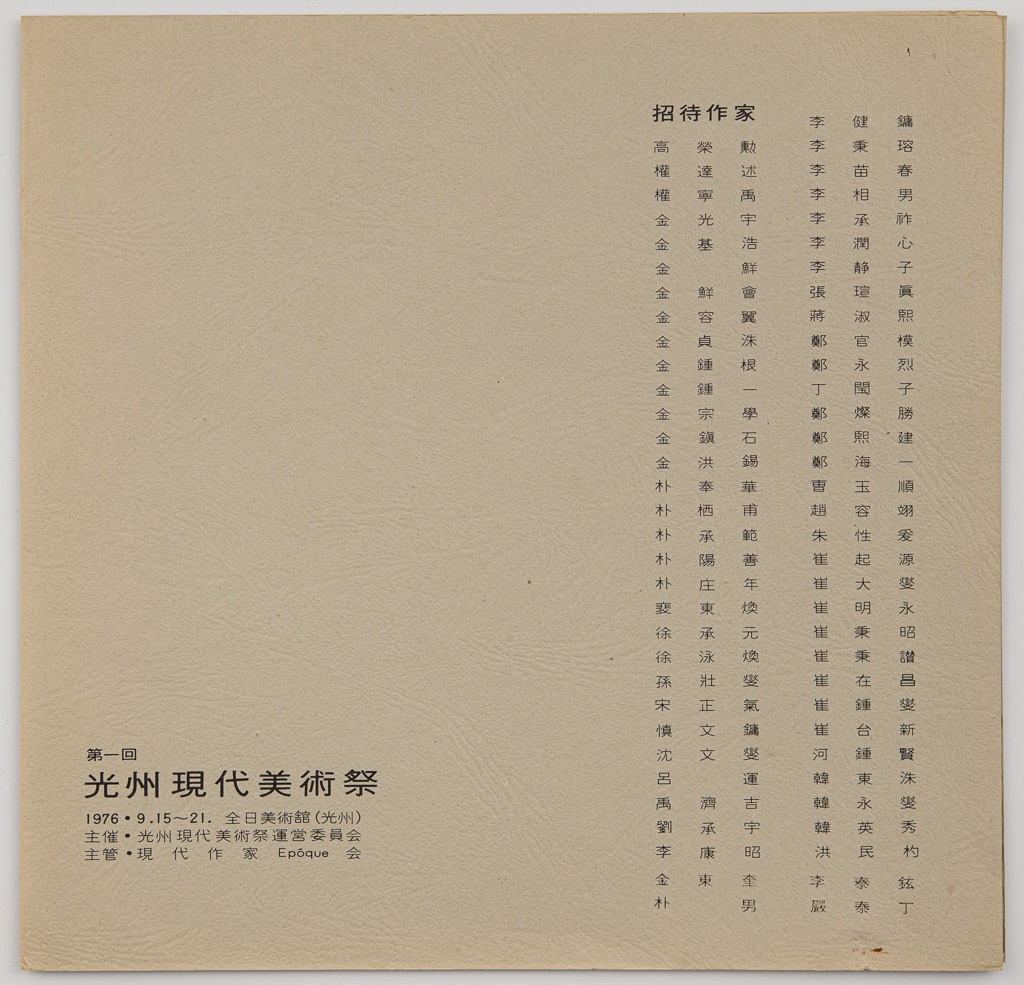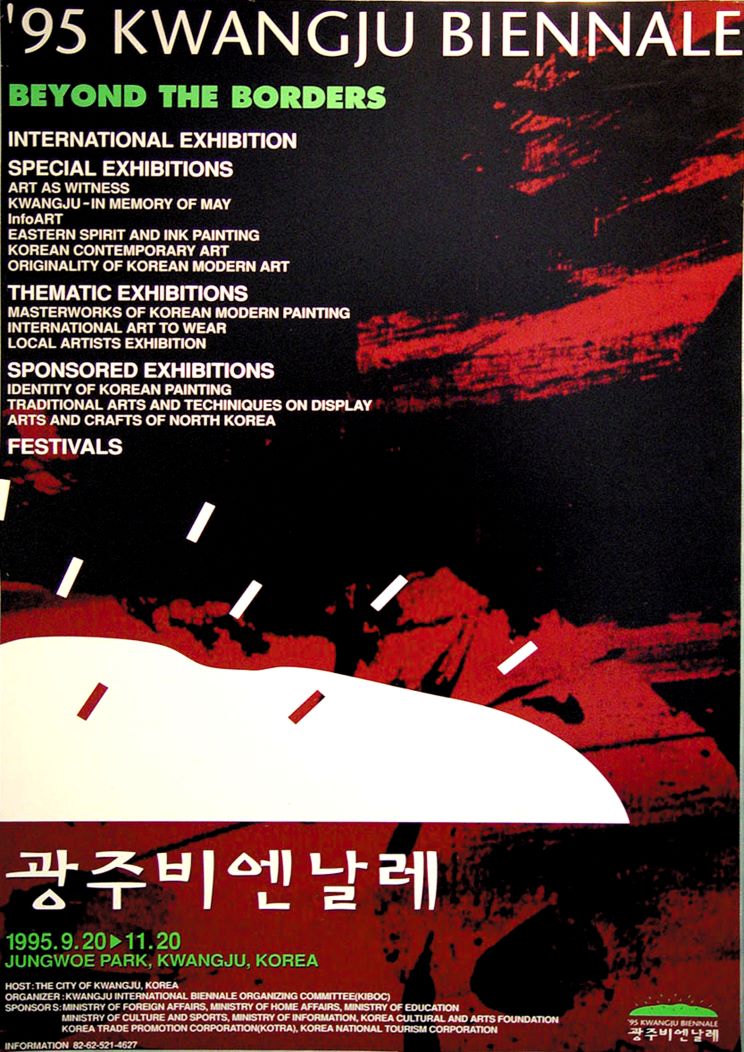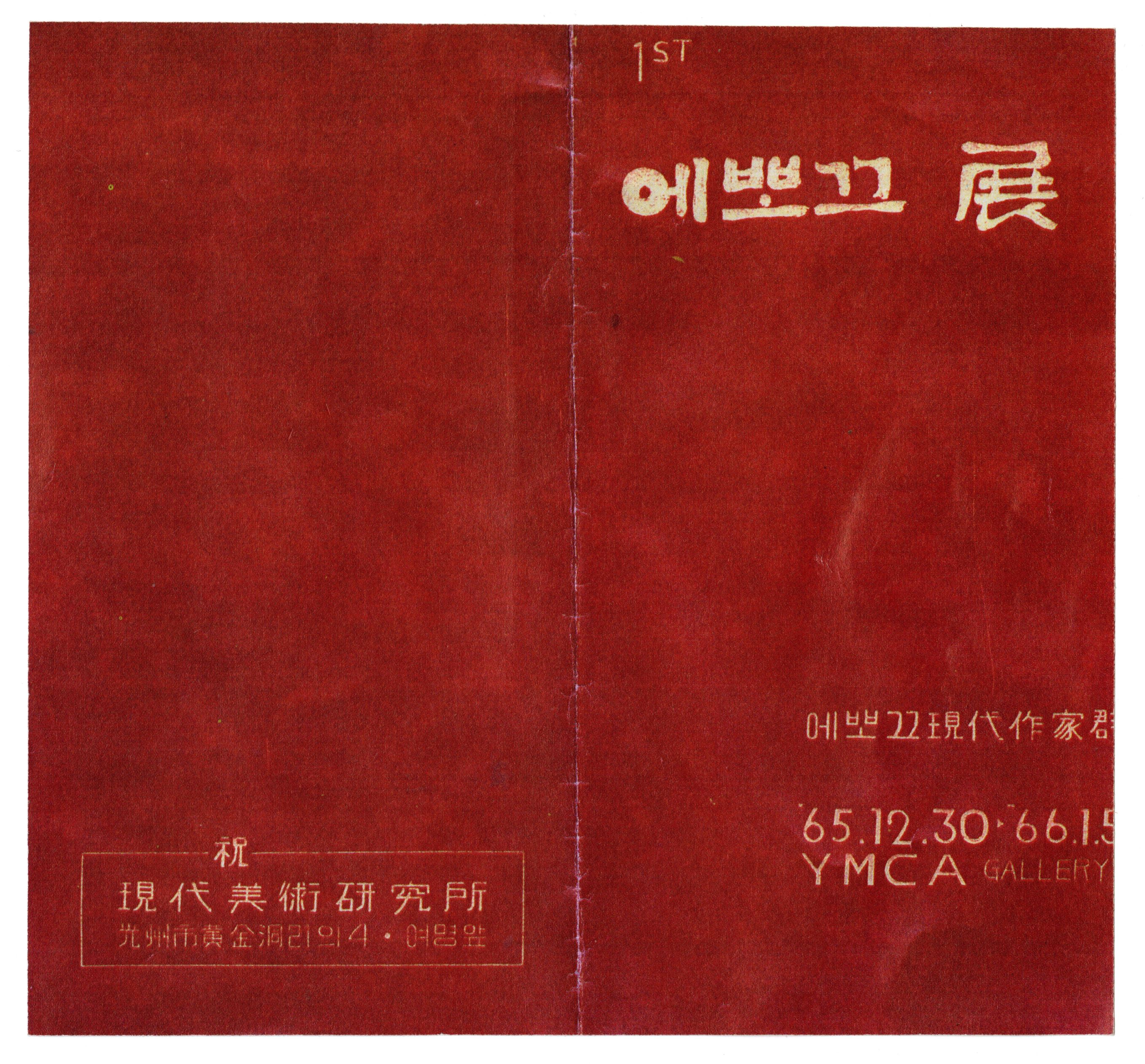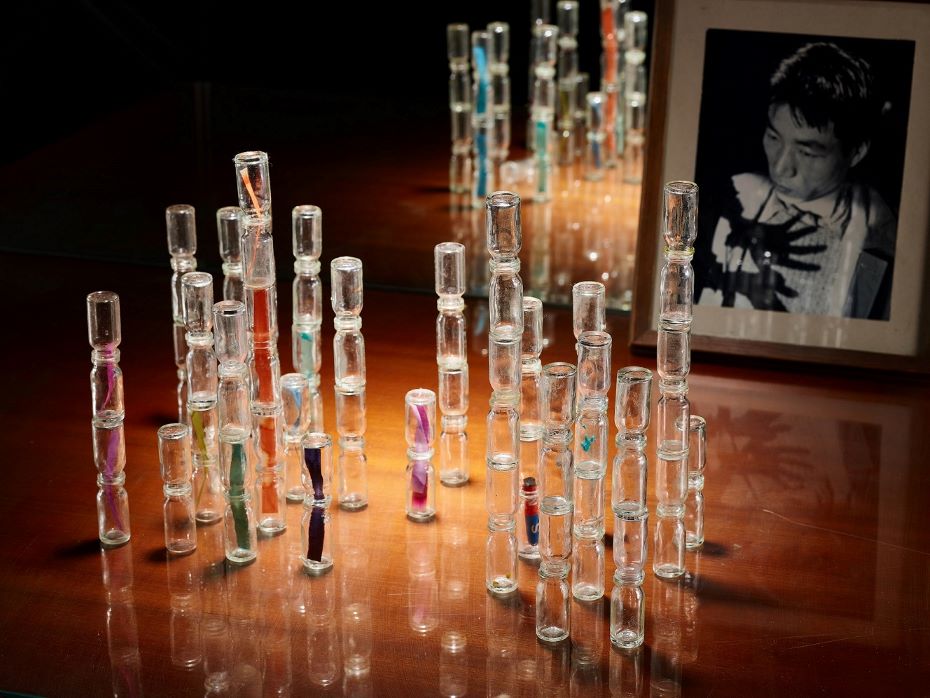
The First Gwangju Contemporary Art Festival, 1976, MMCA Art Research Center Collection, Gift of Lee Kun-Yong
Gwangju Contemporary Art Festival
* Source: MMCA
Related
-

Gwangju Biennale
An international contemporary art exhibition held every two years. The biennale is the first of its kind in Asia. The theme of the first Gwangju Biennale in 1995 was Beyond the Borders, and the theme of the most recent twelveth Gwangju Biennale was Imagined Borders. Each biennale hosts exhibitions and events based on themes that reflect the global diversity of socio-cultural realities and progressive values around the world.
-

Epoque
Epoque is Gwangju's first abstract art organization, which was formed for The Figurative Three People's Exhibition (Panmunjeomdasil), featuring Choi Jong-seop, Park Sang-seop, and Myung Chang-jun, all of whom graduated from Gwangju Teacher’s School. With the aim of achieving 'the new origin' of Gwangju art, various members, including Kim Jong-il, Myung Chang-joon, Park Sang-seop, Lee Se-jeong, Cho Kyu-man, and Choi Jong-seop, who were the founding members, named the group 'Contemporary Artist Epoque' and held their first exhibition. The group, serving as a hub for abstract art in the Jeolla region, registered itself as a corporation and began publishing a magazine in 2005, all while continuing its steady exhibition activities. Being the first art magazine in Gwangju, it was initially published twice a year and has been published annually since 2013.
-

Experimental art
A genre of Korean art characterized by non-two-dimensional work such as sculpture, environmental installation and performance that emerged in the late 1960s and continued over the course of the 1970s. Art historian Kim Mikyung has analyzed the movement in the context of the political and social phenomena of the time and first coined the term experimental art to describe such work.






